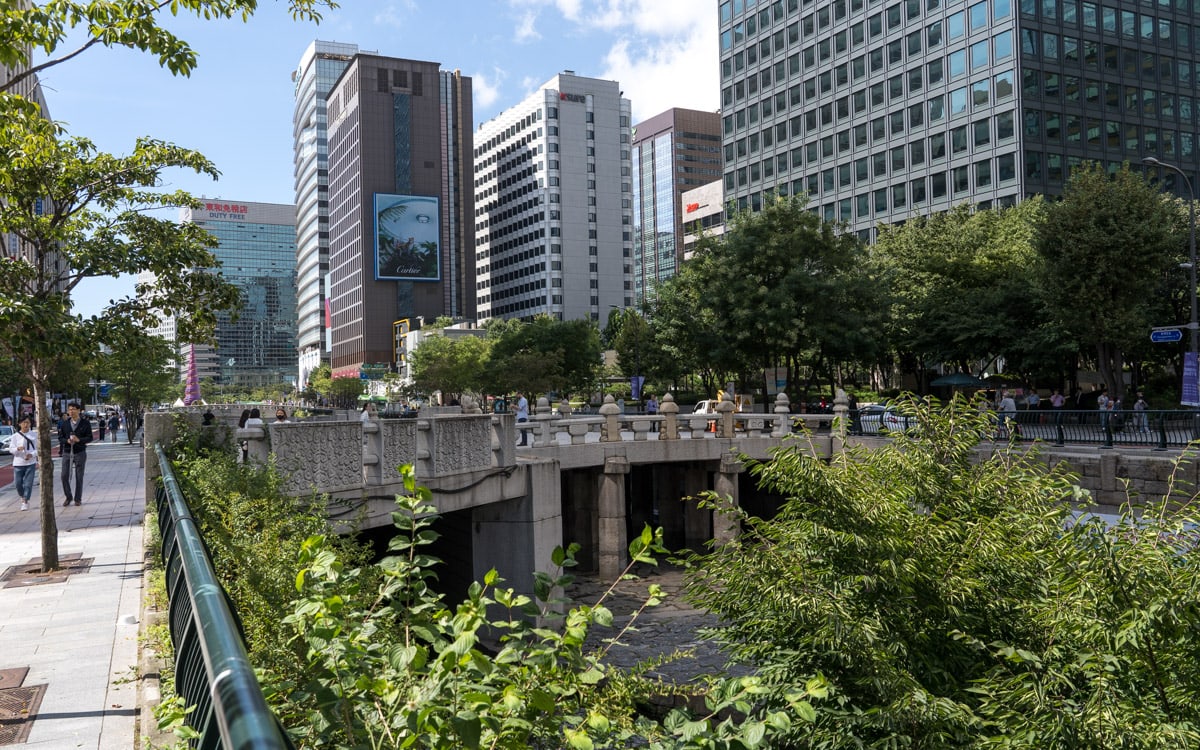
Gwangtonggyo Bridge was one of the most important and busiest bridges in Seoul during the Joseon Dynasty when markets could be found lining both sides. Originally, it was built using wood and soil, but was destroyed by massive floods.
Construction began in during the Joseon Dynasty in 1410 by King Taejong, who reigned from 1400 to 1418. Taejong used the stones from the tomb of Queen Sindeok for construction as a sign of his ruthlessness, power, and a sign of the state royal affairs. The stonemasons who worked on it were some of the best of the period. The bridge has also been known as Daegwangtonggyo.
In the past, the bridge connected Jukjo Street with Namdaemun Gate. Around the same time, two other nearby bridges were built, Samilgyo and Saebyeokdari. Royal parades would pass over the bridge, along with foreign visitors who were in Seoul visiting the palaces.
A folk festival was held here on the day of first full moon of the year. People from all social classes would come here to play games and fly kites during the festival. It was also thought that those walking across the bridge would have better health and be protected from disease. People would also eat all type of nuts to drive away evil spirits, as it was thought that the sound of cracking a nut kept these spirits away.
Starting in 1958, and until 1975, the Cheonggyecheon Stream area was developed into a 5.7 kilometer (3.4 mile) elevated highway.
The bridge was buried for over 100 years. Restoration work, along with the stream, began in 2003 and was completed in 2006. Some of the stones seen today are original.
Mojeongyo Bridge lies to the west while Gwanggyo Bridge lies to the east.
Last Updated on Feb 28, 2024